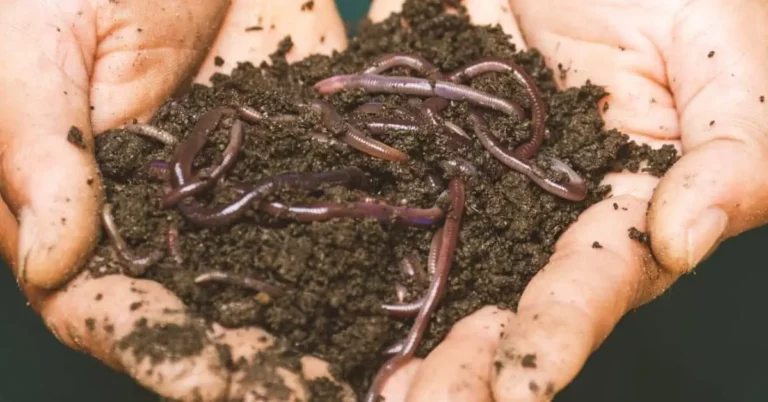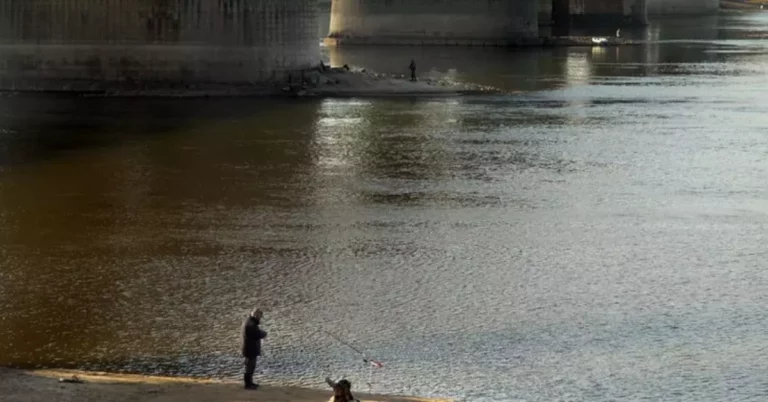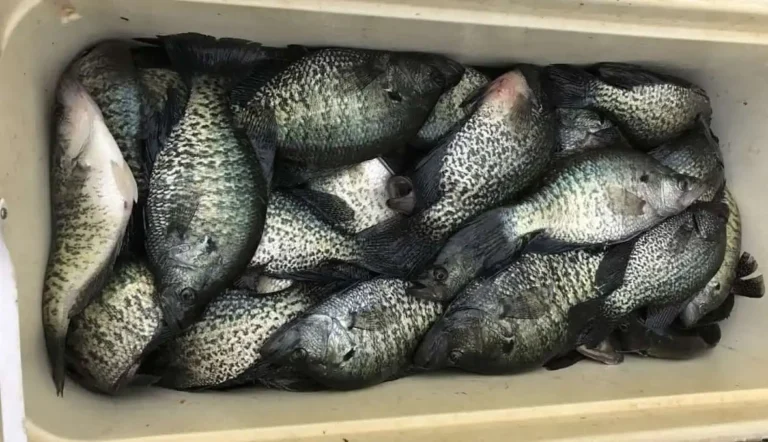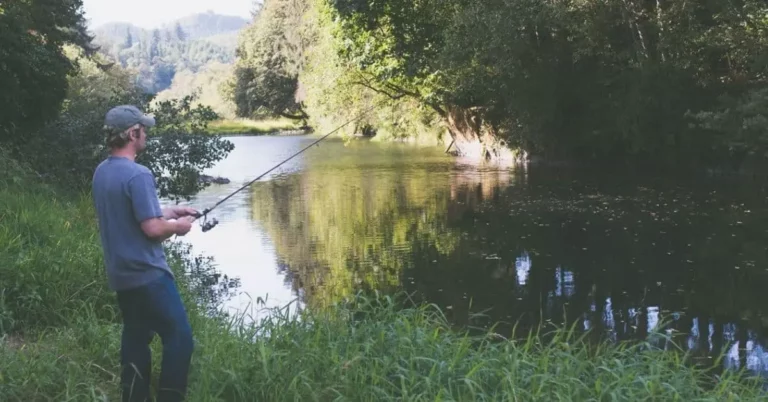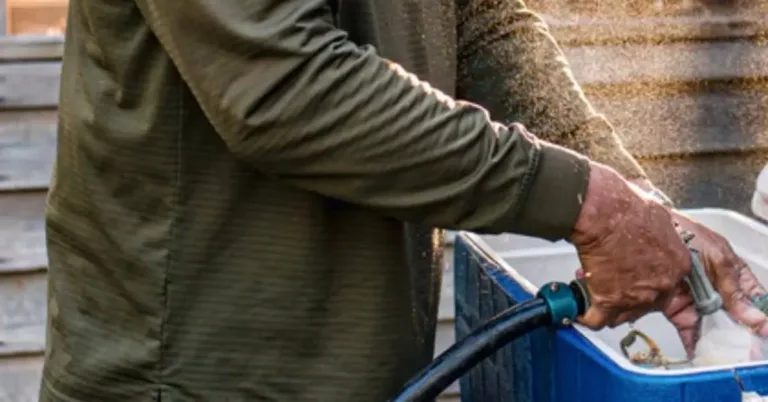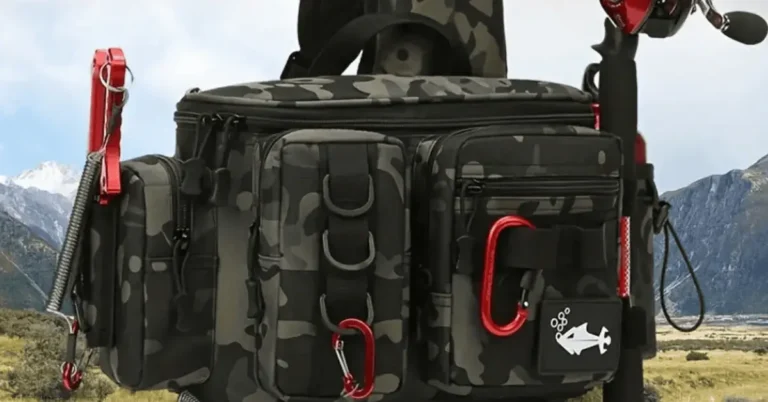Crappie Fishing – Fall “Where They Are” & “How to Target Them”
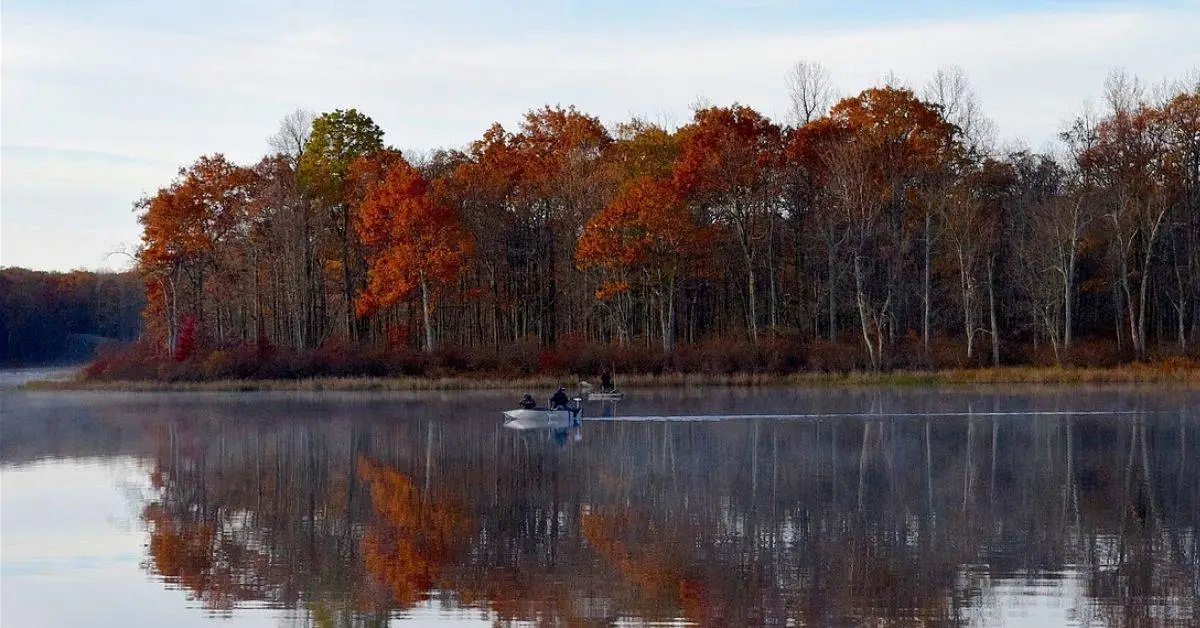
Where the crappie hide and the techniques used to catch them changes as do the seasons of the year. Some minor changes in your crappie gear might be needed, but for the most part the gear you used for the other seasons will be fine.
Fall brings on a migration of sorts for many fish, they will often come out of their summer depths and begin searching for food to hold them through the winter.
So where are crappie in the fall?
In the fall crappie will move towards deeper vegetation and then roam about following minnows and shad as they feed. You can look for them along channels and steeper drop offs where they can easily reach deep waters. This is a heavy feeding time for crappie and they are likely to bite with a passion.
With the basics out of the way, let’s look more into the specifics of fall crappie fishing.
What Is Fall – With Crappie That Is?
This may seem like a bit of a silly question; however, it is important to remember that crappie range all across the United States and into some other countries as well.
With that in mind “fall” is more a set of conditions versus a specific time frame. Since temperatures and weather patterns will vary across the globe, let’s look into the conditions that trigger “fall” behavior in crappie.
In regards to crappie, they begin exhibiting fall behavior once the average temperatures drop below 80 degrees or so. At this point, they will begin their move from their summer staging into the channels and along edges where large schools of bait fish congregate.
This is often just about the times the leaves on the trees will begin to change colors.
While crappie will remain active into the winter they tend to change their behaviors again when the temperatures drop below 50 degrees fahrenheit.
Crappie Behavior During the Fall
While crappie will continue to feed into the winter, they tend to gorge themselves on the large schools of bait fish found in the fall. This allows them to put on some extra thickness and reduce the amount of food they need to hunt in the winter when pickings become slim.
During this time, they will have grown in size over the spring and summer, additionally so have their primary food sources of minnows and shad, use baits in the 2 to 3 inch size and place them in areas where bait fish are likely to be found.
Remember bait fish will be congregating in areas that provide food for them as well, places where streams feed into a main body of water, and wind blown narrows are two examples of these locations.
5 Tips that can Boost your Catch Rate when Fishing Crappie In the Fall
A few simple tips can greatly improve your catch rates, so look these over and add them to your arsenal.
Consider All Depths
As water temperatures change it will cause a lake to “turn over.” This results in nearly all of the water at any given depth being relatively close in temperature. Because of this, crappie are likely to move to any depth that they can find a supply of food.
If you are having a hard time locating the fish, then try in the mouths, and even up the creeks a ways. The oxygen count is likely to be higher in these areas resulting in more of a food supply for the bait fish, and thus more bait fish for the crappie.
Shoot the Docks
Since crappie are likely to move to shallower waters in search of bait fish, they will still seek areas of cover. Docks provide an excellent shade cover for them and the relatively clear waters make it easy for them to spot their prey.
At this point, you can try skipping a small lightweight jig up under the docks and allowing it to sink back towards you. Keep the weight light enough that it floats, but just heavy enough to get a slip under the dock. I find a 1/16 ounce to be about the perfect size for this.
Focus on Vertical Jigging around Obstacles
Crappie will start to look for cover and can often be found hiding in or among the underwater limbs and rocks. Dropping a vertical jig down on them is the easiest way to target these.
In addition to ease of targeting, a vertical jig is worked slower than your normal jig patterns. This allows the crappie who are beginning to conserve energy, especially the closer to winter it gets, more time to strike at the jig. It is possible that by keeping the bait in the strike zone longer that a fish who may not have otherwise bit, takes a lazy hit at it just because it is there.
Swap from a Solid Bobber to a Slip Bobber
Since the fish are ranging at nearly any depth, having a slip bobber rigged is ideal. This will allow you to quickly adjust your depth, and still maintain a long casting range since the fish may be holding off of ledges in deeper waters.
Use Spider Rigging to Your Advantage
Most people I know who use a spider rig, tend to do a slow troll with the boat. However, in the fall I prefer to select an area and rig up several poles for vertical fishing.
Set each rod at a different depth, choose a depth variance that allows you to cover the depth you’re working at. In twenty feet of water I rig 5 poles every 3 feet apart. This gives me a fishing range of 3 to 15 feet
At this point, assuming you are using a bait they are interested in and that there are fish at the location you should get some bites. Use this to key in on the depth they are at for that time period and then adjust the rest of your rods to that depth.
Targeting Fall Crappie
Now that we know where crappie will roam, let’s look at how to target them. We have already discussed shooting the dock, the idea of cover provided by the dock is going to be key in the rest of the areas as well.
No matter if your fishing creeks, rivers or lakes, crappie are going to seek out some cover, this is both to hide them from predators and hide them from their prey.
Creeks, Streams and other Tributaries
Crappie are going to hang out in the small creeks and streams that feed larger bodies of water, especially in the areas where the current breaks. This is because the shad and minnows will move into this area to collect the food that slows in the current here.
Fish these areas by rigging a #2 hook with minnows and fish the width of the tributary until you find where they are holding. Keep in mind that the fishing will be best in these areas at dusk and dawn. It can also suddenly come to a dead stop and you should consider the time.
If it is just becoming dusk then it is likely the biting will return in a short time as the schools of bait fish return to the main body of water after their feeding and the crappie follow them.
In early morning the opposite holds true, so you will need to determine if they are moving from the stream to the lake or into the stream for their feed.
Spillways
In much the same way that the creeks will bring food to the bait, fish spillways do the same. However, often the water breaks and slows around the structure of a spillway and this is where the bait fish will gather. Fishing is best in both Spillways and Tributaries during early morning and at dusk. The hour before sunrise to an hour after and an hour before sunset to an hour after are the best for these locations.
Rocky Points, Fallen Trees and Water Structures
The rip rap along rocky points, fallen trees and docks all provide excellent places for both bait fish and crappie. These areas are likely to hold fish throughout the day with fishing slacking off slightly at dusk. Look for areas that have cover, but also provide a steep drop off into deeper waters, these are the areas with the highest chance of holding fish throughout the day.
Techniques
Vertical jigging tends to be easier during this time as a slower presentation of the bait is key. Simply holding the rod or the motion of the boat is sufficient movement to cause the thin tail of most jigs to flutter about as you wait.
Using a float is also a way to ensure you’re at the desired depth and the movement of the water will keep the jig fluttering.
This is often enough to trigger a strike. By using several rods you can try a few different depths to figure out where they are holding in a location.
Keep in mind due to underwater conditions this depth could vary depending on where you are on the lake. So remember to try different depths when changing up locations.
Conclusion to Fall Fishing for Crappie
Hopefully these tips can help you locate the crappie in the fall. The conditions present an excellent opportunity for catching crappie, and can often rival catch rates in the spring. You just have to locate them in their feeding frenzy first, so remember
Fall Crappie can be found following bait schools; look for them off of rocky points and timber during the day and in the mouths of small tributaries around dusk and dawn. Minnows and jigs presented vertically at various depths are your best option during this time of year.

